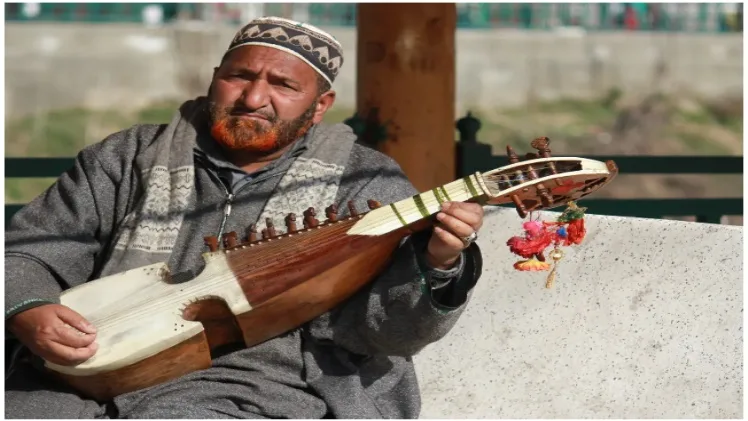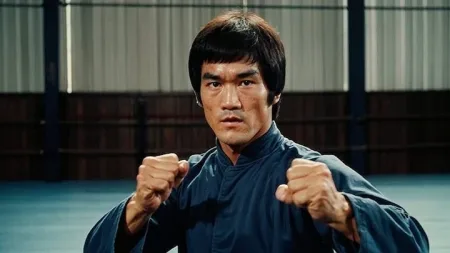Kashmiri Folk Music and Dance: A Cultural Extravaganza
Have you ever wondered what it feels like to be transported to a world of enchanting melodies and vibrant dances? Imagine being surrounded by breathtaking landscapes, and the air is filled with the soul-stirring tunes of traditional instruments. If you’re looking for such an experience, look no further than the mesmerizing realm of Kashmiri Folk Music and Dance. Beyond the enticing Kashmir trip packages and the allure of the top lakes in Kashmir, there lies a world of Kashmiri folk music and dance that add a unique dimension to the region’s cultural tapestry.
In this blog, we will explore the enchanting world of Kashmiri Folk Music, where every note and every move is a reflection of the rich culture and heritage of this region. So, let’s dive into this cultural extravaganza and discover the rhythms that have been an integral part of Kashmir’s history and tradition.
A Symphony of Tradition: Kashmiri Folk Music

Kashmiri folk music is a sublime fusion of melodic beauty and poetic expression. It’s deeply rooted in the traditions of the Kashmiri people and is an essential part of their daily lives. The melodies of Kashmiri folk music transport you to a world where tales of love, beauty, and everyday life are beautifully woven into songs that have been passed down through generations.
- Sufiana Kalam: Sufi music plays a significant role in Kashmiri culture. Sufiana Kalam, or Sufi music, is a devotional form of music that revolves around themes of spirituality, love, and devotion to God. The haunting melodies and poetic lyrics are accompanied by instruments like the Santoor, harmonium, and traditional percussion instruments.
- Chakri: Chakri is a popular form of Kashmiri folk music, characterized by its lively and fast-paced rhythm. It often accompanies festive celebrations and is performed during the annual harvest festival known as “Baisakhi.” The Chakri ensemble includes instruments like the rabab (a stringed instrument) and the tumbaknari (a percussion instrument).
- Ladishah: Ladishah is a form of traditional Kashmiri music performed by women. It involves singing songs that narrate folklore, historical events, and local stories. The lyrics often have a melancholic and nostalgic tone, resonating with the struggles and aspirations of the Kashmiri people.
Lavish Musical Instruments
The accompaniments to these musical performances are equally fascinating. You’ll find traditional instruments like the Santoor, Rabab, and Tumbaknari adding a distinctive charm to the music. The Santoor, in particular, is a trapezoid-shaped instrument that produces enchanting sounds, evoking the beauty of the Kashmiri landscapes. The Rabab, a precursor to the modern guitar, is another vital component of Kashmiri music. The rhythms are complemented by the harmonious notes of the Tumbaknari (a type of drum) and the Nout (a traditional flute), creating a magical ensemble of sound.
Song and Poetry
The lyrics of Kashmiri folk songs are often poetic and deeply rooted in the culture and history of the region. The poetry in these songs beautifully captures the essence of life in Kashmir, from the majestic landscapes to the rich heritage. It’s a form of storytelling that has been integral in passing down the history of Kashmir from one generation to the next.
Occasions and Festivals
Kashmiri folk music is not limited to the confines of a concert hall; it’s an integral part of life in the valley. From birth to marriage, and even in times of mourning, music plays a significant role. Festivals such as Navreh, Shivratri, and Baisakhi are celebrated with music and dance, adding vibrancy and charm to the festivities.
The Graceful Art of Kashmiri Folk Dance

Kashmiri folk dances are a visual representation of the region’s diverse cultural heritage. They are not just performances but expressions of the emotions and stories deeply rooted in the life of the Kashmiri people.
- Rouf: Rouf is one of the most well-known Kashmiri folk dances. Performed primarily by women, Rouf is a celebratory dance often seen at weddings and festivals. Dancers clad in vibrant attire create intricate patterns with their feet while gracefully swaying to the rhythm of the music. The dance is symbolic of the agricultural roots of Kashmir, as it imitates the act of sowing and harvesting.
- Hafiza: Hafiza is a dance form that involves dexterous footwork and rhythmic movements. Typically performed by a group of women, it’s a graceful dance that adds a touch of elegance to Kashmiri festivities. The dancers often use a pot or a lit lamp on their heads to showcase their skill and balance.
- Bacha Nagma: Bacha Nagma is a traditional dance performed at the time of the harvest. It is a male-dominated dance form, where the men come together to celebrate the bounty of the land. Dressed in colorful attire, the dancers use sticks and swords, creating a visually captivating performance that represents the bravery and valor of the Kashmiri people.
- Dumhal: Dumhal is a traditional Kashmiri dance performed primarily by the menfolk. Dancers dress in elaborate costumes, including tall conical hats adorned with feathers and beads. The dance is often accompanied by rhythmic beats of the drum and flute, and it is a significant part of the cultural heritage of the region.
Festivals and Celebrations: Keeping Tradition Alive
The best way to experience the magic of Kashmiri folk music and dance is by attending one of the many festivals and celebrations that take place throughout the year. These events showcase the authenticity of these art forms and allow visitors to immerse themselves in the cultural richness of Kashmir.
- Navreh Mela: Celebrated on the first day of the Kashmiri New Year, the Navreh Mela is a grand celebration that includes traditional music and dance performances. This festival marks the onset of spring and is a time when the entire community comes together to celebrate life and culture.
- Tulip Festival: The Indira Gandhi Memorial Tulip Garden in Srinagar hosts the annual Tulip Festival, where visitors not only witness the breathtaking sight of tulips in full bloom but also enjoy cultural performances, including folk music and dance. This is the perfect opportunity to witness the harmony between nature and tradition.
Kashmir’s Cultural Treasure…….
Kashmiri folk music and dance are not just a reflection of the region’s culture; they are the heart and soul of the Kashmiri people. The melodies, rhythms, and graceful movements are a testament to the profound connection the people of Kashmir have with their land and traditions.
While Kashmir’s picturesque landscapes and top lakes are undoubtedly captivating, don’t forget to explore the cultural extravaganza that is Kashmiri folk music and dance during your visit. These art forms will not only enrich your experience but also allow you to connect with the soul of this magnificent region.



